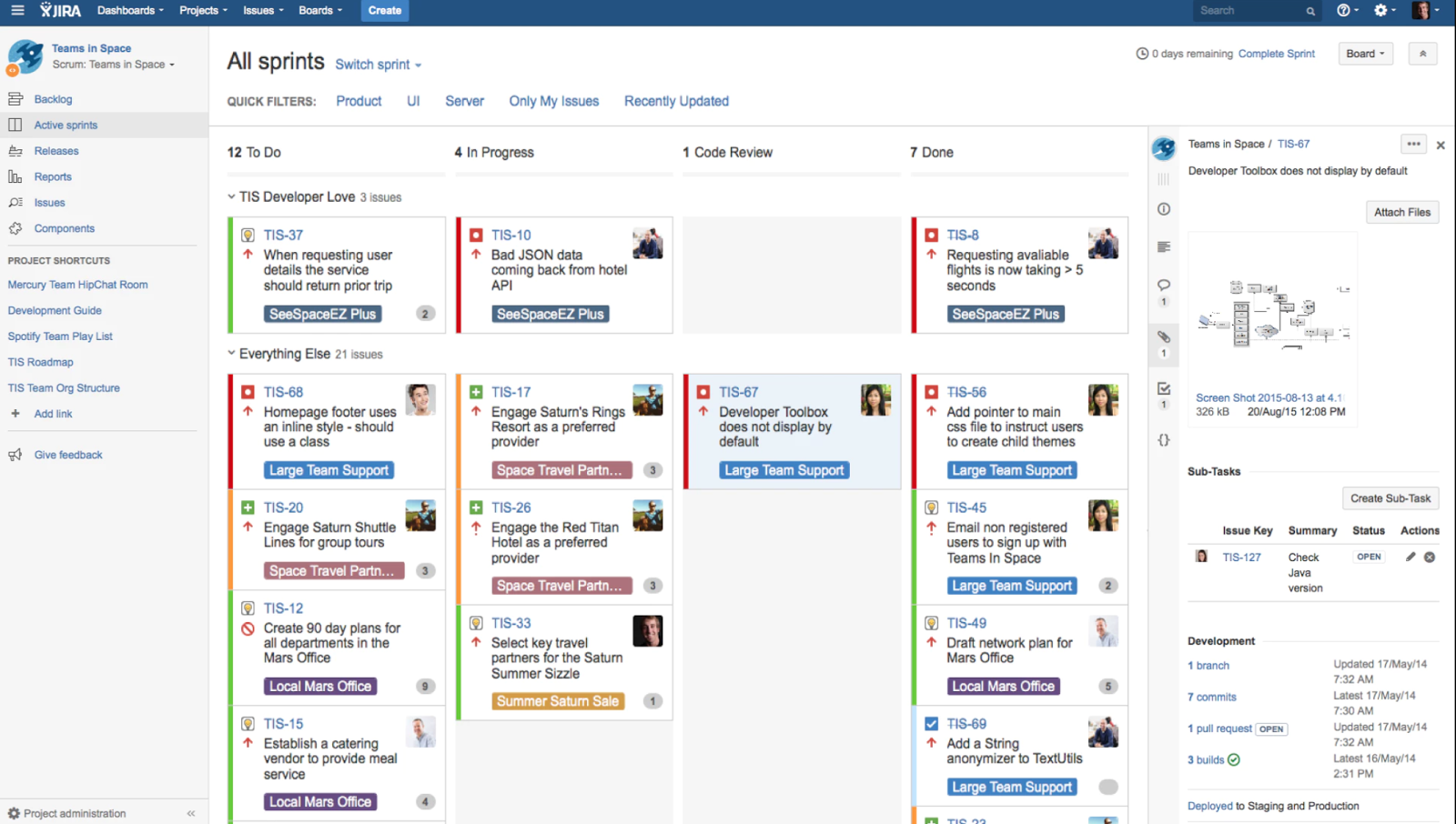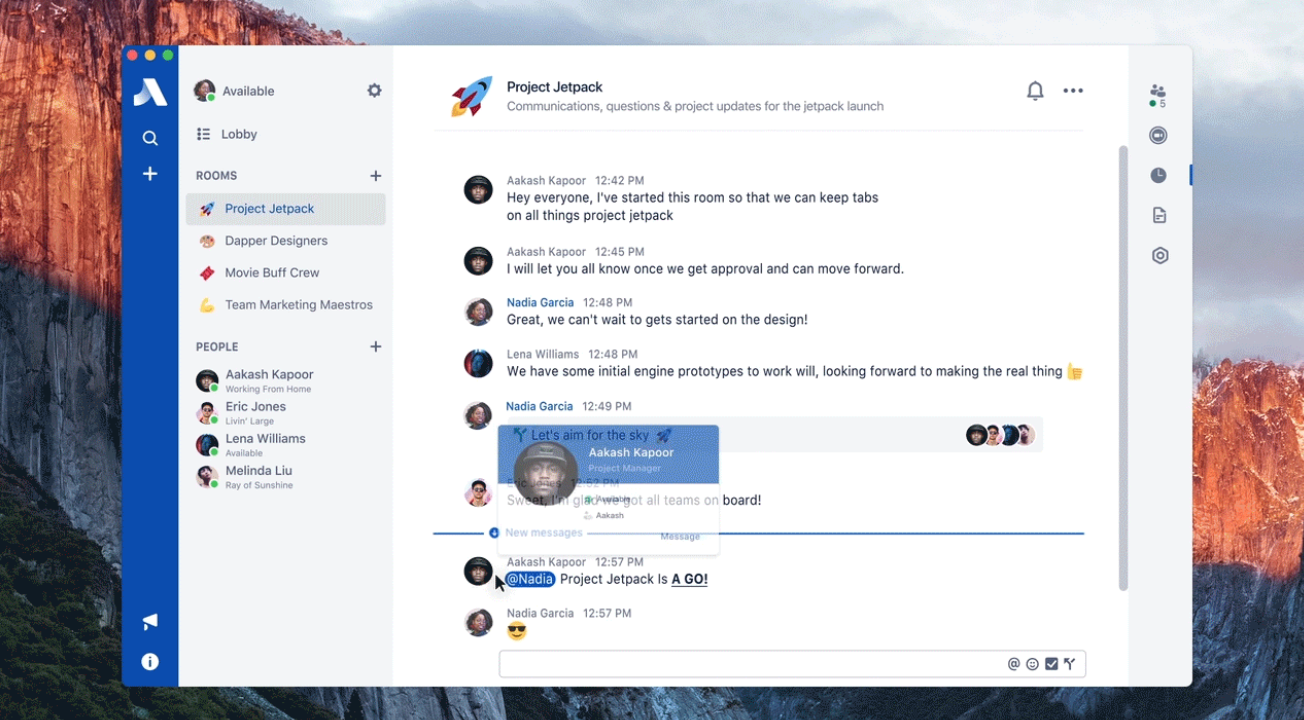How Atlassian has built a $ 10 billion business. Part 2

We continue to tell the story of Atlassian. Part 1 you can read here .
2015-present: expanding into profitable competitive markets
For many SaaS companies, today's Atlassian business looks like the “ultimate goal”: to grow into a huge public company operating on the world market with a complex set of integrated products for a wide variety of teams.
')
But Atlassian understands that success is not a point on the chart, but a continuous line: if you are successful, but you cannot maintain growth and a confident presence in your markets, you will be thrown out. Therefore, today the company's goal is not just to create a best-in-class toolkit for developers, but rather to make organizations as a whole, along with all departments, use appropriate products from the Atlassian family.
On the one hand, Atlassian is working to ensure that its solutions can be used by various departments of organizations. On the other hand, companies need to somehow maintain relevance for small teams, because for them, many companies bringing in income products become unnecessarily complex. However, instead of spending time on developing “lightweight” versions of its own solutions, Atlassian goes through a tested way: it acquires products with simpler functionality, integrates them and thus adds to its family.
Let's take a closer look at how acquisitions and integration over the past few years have helped the company expand its product funnel and enter more profitable competitive markets.
Transferred to Alconost
2015: Atlassian holds an IPO in December and starts trading shares with a market capitalization of almost $ 5.8 billion .
The company's plan after the IPO was to increase sales, actively investing in research and development, on which more than 40% of revenues were spent. In addition, the goal was to maintain annual sales growth for the product family at 30% . This, in turn, led to an increase in revenue that could be invested in development and acquisitions — so the flywheel kept spinning.
2016: To expand its presence as a provider of an integrated set of tools and help client companies to maintain their software, Atlassian acquires Statuspage , a tool that keeps users informed on the status of online services. The Atlassian team already had a business relationship with the company Statuspage, as they were one of the first users of HipChat and at that time already published the status of services via Statuspage.

According to Atlassian President Jay Simmons, the new product filled a niche that naturally arose in Atlassian's offers, in particular, in the case of services for tracking problems in the Jira system. The purchased product not only complemented the functionality of the latter (as well as other family tools), but also attracted new users due to a wider use case.
2017: Atlassian acquires a simple and convenient tool to manage Trello projects, which allows the company to gain a foothold in the market for small teams. I have already spoken about this deal in terms of opportunities for Trello, however this acquisition is an important step in the development of Atlassian. Trello is a much simpler project management tool than Jira, and the use of kanban boards covers many more use cases.

A source
Atlassian needed a simple solution that could fill the gap in the toolbox for small teams as Jira moved to the upper echelons and became more complicated.

The Trello service is a solution that is universal in terms of usage scenarios, which is a good simple alternative to the developer-oriented Jira system. The addition of Trello directly expands the product funnel, thanks to which Atlassian can now reach a wider range of users - so that, as their needs grow, they can sell other related and more expensive products to them.
Later this year, Atlassian took another serious step by turning HipChat services into a product called Stride - a competitor of Slack for exchanging messages in a team with such obvious functions as text messaging, video and audio conferencing. However, it also has unique solutions: for example, “Employment Mode” (Focus Mode) is analogous to the “absent” status, when you need to focus on work, as well as “actions” and “solutions” - functions that show the most important of the discussions that occurred while you were away. Atlassian claims that the goal of creating an application was to increase team efficiency with solutions that competing products did not have.

A source
Atlassian's recent moves in terms of new products, in particular, Trello and Stride, show that the company is still looking for new ways to reach the most diverse departments in organizations of all sizes. Both Trello and Stride are distributed according to the “minimum free of charge” model, which has become the Achilles' heel for Trello , however, free tariff plans will be a key factor in attracting small teams that cannot afford corporate products with appropriate functionality.
None of Atlassian's latest acquisitions — Trello, Stride, and Statuspage — are tied to particular uses in specific markets. Therefore, each of the products allows you to penetrate into the most different departments of organizations of any size. And all of these solutions have the potential of horizontal distribution within the organization, after they are attracted to in any one department.
Such actions show that Atlassian is deliberately and purposefully expanding through proposals for a wider range of users in more competitive profitable markets. By purchasing new solutions, the company complements their own set of products, while eliminating the potential danger to the business and supporting the connectedness of the family of its decisions.
Where Atlassian can move on
The company's model of acquiring new and successful additions to existing products is a very unusual approach. Looking into the future, we can say that it has all the opportunities to enter other markets through acquisitions.
If we accept that such a scheme of acquisitions and integration will continue to work, we can assume in which areas Atlassian can expand:
- Use Trello to attract new companies. The acquisition of Trello is primarily an attempt to penetrate into new areas of activity within organizations. One of the most promising opportunities in this case is the support of product managers who are not yet using the Jira system or other Atlassian tools. The simplicity of Trello significantly reduces the entry threshold, and this solution has powerful integration with Atlassian tools , which makes it easier to work together between different teams. This creates another entry point to the Atlassian solution family. If Atlassian can attract product managers to Trello, they can start working with this tool, for example, with programmers. This, in turn, will help the latter to learn about such integrated products as Jira, and will encourage the use of more specialized tools - if they do not use them yet.
- Stride as a means of combining all the elements of collaboration. Messaging tools are important for effective collaboration in an organization, and they have the potential to be used in every department of the company. Atlassian understands that it is impossible to give such a potential to the Slack service to which users can connect their working tools. Therefore, Stride is a defensive move, but this does not negate the fact that such a decision can be extremely useful for Atlassian customers and can attract new users. Reducing the need to transfer information manually, eliminating unnecessary actions and fuss makes the job much more efficient and convenient, so Atlassian needs to organize integration and marketing accordingly for the Stride tool.
- Creating tools for designers. Atlasian products include Atlaskit , the company's official user interface library. It includes all the tools necessary to develop an interface in accordance with the Atlassian design guidelines. Here Atlassian can expand and create more versatile tools for front-end developers that can be used in designing the user interface and testing its perception by the user. So the company will be able to compete with Invision and develop a well-integrated tool for designers — and a good start could be to buy an integrated interface design platform - for example, UXPin.
Atlassian has built a business that is profitable and has entered the stock market, so now they have enough time to make informed decisions. If the company continues to move further, calculating its own solutions well, it can become the main supplier of the most useful working tools for SaaS companies of any size.
Three core lessons from Atlassian business.
The founders of the company know that Atlassian is different from other SaaS companies. Many of their decisions were unconventional and took into account the limitations inherent in their business. They said to the others: do not try to copy us .
For those who develop their own business, it is important that it is not necessary and impossible to copy Atlassian solutions: each company must look for ways to success with its own goals, objectives and constraints. But from the approach that the Atlassian team used in solving their problems and finding development opportunities, one can learn a lot of useful information. Such skills are simply necessary for success and growth - without them you will be doomed.
Here are the main lessons to be learned from the Atlassian story, if you build your own business:
1. At the earliest stages, focus on investment efficiency.
Many SaaS companies are trying to achieve profitability by moving in industry standard ways. But Atlassian has achieved success with a non-traditional approach: they have pioneered many aspects of doing business.
First, Atlassian has been distributing its solutions at least free of charge since 2002, because they could not afford to hire a sales department. At that time, very few companies practiced this approach in the field of corporate software. But thanks to this, the cost of organizing sales and marketing from the very beginning was very low.
Another important step in improving the efficiency of capital investments was the active addition of new products at the early stages, which was risky, as many companies tried to gain ground under their feet, concentrating on one product. The Atlassian team began to expand the product family very early, which increased revenues.
Two main mechanisms contribute to improving the efficiency of capital investments: reducing the cost of attracting customers and increasing revenues . Atlassian has found ways to reduce costs and increase revenue, which are applicable in its case, but you can do the same by taking into account your own limitations and the following considerations:
- To reduce the cost of attracting customers, you can use marketing channels with greater efficiency, more effectively transfer free users to a subscription and focus on input marketing through content and free trials.
- To increase revenue, you can raise prices, find additional sources of revenue in the form of new products, and cross-sell other products and add-ons.
Investment efficiency is a critical aspect of Atlassian's rapid growth and success. This way of thinking and acting is a good example for any SaaS company.
2. Find your consumer segment
Atlassian solutions have taken root in the development environment. From there, the company had an entry point to corporate organizations, which allowed it to expand to other departments. And for attracting new teams to additional Atlassian solutions, serious support from developers, whom Jira fell in love with so much that they didn’t want to leave, was very important.
The company Salesforce did the same in the sales market - now they have entered almost all market segments of corporate enterprises, but it all started with CRM and binding to sales departments. Strong positions in one segment are the key to a successful long-term strategy.
At the very beginning of the journey it is difficult to please everyone, since concentrating on one useful tool and at the same time attracting the attention of one and all to oneself is quite difficult. Instead, you should focus on the staff of a single department of organizations and win the favor of this particular group of people. To achieve this, you can do the following:
- To offer the first groups of users in one particular market seminars and conferences on the exchange of experience.
- Talk with the first customers in the target market about what specific tasks your product solves, and reflect relevant problem issues and solutions in marketing.
- Starting to develop add-ons and new features, you first need to make sure that they are clearly related to the target market, and only then you can move on to other segments.
3. Choose a business approach that will become the main
Build a good business can be different. Some prefer to focus more on the development of new products. The latter pay more attention to strategic acquisitions (Atlassian). Still others focus on the delivery method of solutions and implementation in the industry (Salesforce). The fourth tend to simplicity and polish a single product (Basecamp).
There is no one way that is suitable for all, but all these companies have something in common: they developed their approach at an early stage and consistently implemented it in all their decisions.
It is difficult to determine in which way the company is more important to focus on the early stages, but this solution will give a clear guideline. Two important questions will help in its adoption:
- What is your initial company and product vision?
- What goals do you think the company should achieve in 5, 10 and 20 years?
Do not go the trodden paths thoughtlessly - find your own path of development
Building a company for the long term is a difficult task: you will encounter many different constraints in various aspects of your business. Something that worked before will not necessarily work the next time. But if you decide which way you will grow and expand, and you have a step-by-step plan for this, you will be able to develop a decision-making scheme that will be applicable in a variety of circumstances.
Atlassian's strategy — acquisition, integration, and natural distribution — became unique because few companies followed a similar path (and not all worked out well). Your company may also differ from others. And the challenge is to develop an approach that will help win with the cards in hand.
About the translator
The article is translated in Alconost.
Alconost is engaged in the localization of games , applications and sites in 68 languages. Language translators, linguistic testing, cloud platform with API, continuous localization, 24/7 project managers, any formats of string resources.
We also make advertising and training videos - for websites selling, image, advertising, training, teasers, expliners, trailers for Google Play and the App Store.
Read more: https://alconost.com
Source: https://habr.com/ru/post/348040/
All Articles